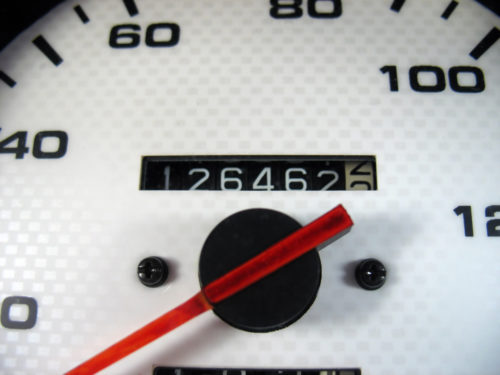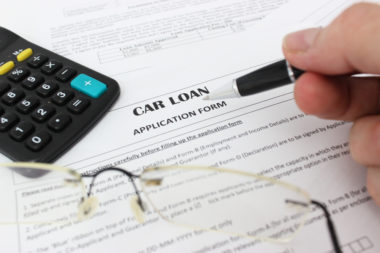Table of Contents
Why Mileage Matters
Mileage might be the single most important thing to look at when purchasing a used car. It can affect the price due the condition of the car, and can be a significant bargaining chip. What’s good mileage on a used car, and how can you turn that into getting a good deal? Let’s find out.
How Much Mileage is Good for a Used Car
Technically, there is no sweet spot for mileage on a used car. Instead, you want to look at how the car was driven, where it was driven, and whether routine maintenance was performed at certain milestones. Generally, the fewer miles the car has, the less wear and tear, but that’s not the whole story.
Average Annual Mileage
The average American drives about 13,500 miles per year. Knowing this, you can do some simple math. How old is the car? Multiply the number of years by 13,500 (or about 15,000 to get a fairly round number), and you can get a rough estimate of how much the car was driven compared to the average car. If it’s less, then you might expect to pay more money for the car, but it’s also likely in better condition.
If, however, it has significantly more miles, it might also have much more wear and tear. This isn’t necessarily bad, as this can mean the car will be cheaper.
Kelly Blue Book Mileage Cost Deduction
Dealerships will often use the Kelley Blue Book mileage deduction as an industry standard. It’s fairly simple to input the make and model yourself and see what the car should be worth, given the year. What a KBB mileage deduction does is look at what the average number of miles that year of car should be at, and adjust for actual miles driven. For example, if a 5-year-old car has 90,000 miles on it, it has more than the average, between about 67,500 and 75,000 miles. The price will be adjusted down a couple hundred dollars.
In their own words, “If a vehicle’s mileage is higher or lower than the typical mileage, we give it the necessary adjustment. Generally, lower-mileage vehicles have a higher price or value.”
Mileage and Maintenance History
Mileage can inform you about the condition of the car, as well. If a car has 120,000 miles, it might need a new engine soon. Parts like brakes might need to be replaced. A major question to ask is whether the car has been regularly maintained. If it has not, this could decrease the value of the car. It might make for a bargain, but you will also likely have to pay repair or new parts costs soon.
On the other hand, with careful maintenance, some cars could last to 200,000 miles. This could lend itself to getting a fantastic deal on a car that still runs well.
When doing an inspection of a new car, it’s important to note if the car is near a maintenance milestone — more on that below. If it’s near a milestone, but has not been taken in to be serviced by a mechanic, it could be because there is something else wrong with the car that the previous owner did not want to spend the money to fix.
Used Car Mileage Chart: Maintenance Milestones to Look For
There are certain milestones (in terms of miles driven) where cars should be taken in for maintenance. This might be preventative, but it can also address issues that might not be readily apparent. Below, there are general charts that can apply to most cars. If you want a more specific maintenance schedule, check Edmunds’ Car Maintenance Guide.
Insurance company Progressive suggests buying a car that has been serviced every 3,000 miles until it hits 15,000. After that, every 15,000 miles.
There’s also a breakdown of how often specific parts should be checked. Dashboard lights, lights, tire pressure and condition, windshield washer fluid, and engine oil levels should be checked frequently.
Every 3 months or 3,000 miles:
- Automatic Transmission Fluid
- Battery and Cables
- Belts
- Dashboard Indicator Light On
- Engine Air Filter
- Engine Oil
- Exhaust
- Hoses
- Lights
- Power Steering Fluid
- Tire Inflation and Condition
- Windshield Washer Fluid
Every 6 months or 6,000 miles:
- Automatic Transmission Fluid
- Battery and Cables
- Belts
- Chassis Lubrication
- Dashboard Indicator Light On
- Engine Air Filter
- Engine Oil
- Exhaust
- Hoses
- Lights
- Power Steering Fluid
- Tire Inflation and Condition
- Windshield Washer Fluid
- Wiper Blades
Every 9 months or 9,000 miles:
- Automatic Transmission Fluid
- Battery and Cables
- Belts
- Dashboard Indicator Light On
- Engine Air Filter
- Engine Oil
- Exhaust
- Hoses
- Lights
- Power Steering Fluid
- Tire Inflation and Condition
- Windshield Washer Fluid
Every year or 12,000 miles:
- Automatic Transmission Fluid
- Battery and Cables
- Belts
- Brakes
- Cabin Air Filter
- Chassis Lubrication
- Dashboard Indicator Light On
- Coolant (Antifreeze)
- Engine Air Filter
- Engine Oil
- Exhaust
- Hoses
- Lights
- Power Steering Fluid
- Steering and Suspension
- Tire Inflation and Condition
- Wheel Alignment
- Windshield Washer Fluid
- Wiper Blades
Image Source: https://depositphotos.com/





